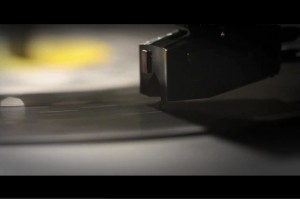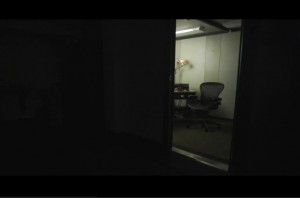Previously, on A Life’s Work blog
In a previous post I wrote about the process of editing a clip from the Black Gospel Music Restoration Project Program section of A Life’s Work. Since I’ve been working on the subsequent section of the BGMRP story I thought, why not share that process as well?
You don’t need to view the previous clip, but it might put this one in context a bit more. So here’s the clip. Or read on.
So in that previous clip that you may or may not have viewed, Robert Darden lists the numerous challenges the BGMRP faces while the visuals take us part way through the process of archiving some rare vinyl. Audio engineer Tony Tadey role is prominent. What’s not in the clip above, but is in a newly re-edited clip, is Robert expressing his concern about the project’s reliance on the audio engineer position, and how that position is not financially secured.
“… if he’s gone and we don’t have money to hire another audio engineer, then everything comes to a halt,” Darden says.
I wanted to resume showing the archiving process. The newly re-edited clip ends with the needle dropping on the record and the sound of the pre-music scratchiness of stylus on vinyl. I liked the idea of ending that section with some suspense. What are we going to hear? (Note that the clip above starts playing music, a different song than you’ll hear at the start of the clip below.)
Right here’s the new clip.
As with every section, the editing process begins with the subject telling the story in his or her words. In this section, the narrative was all about the hurdle the BGMRP encountered. There really wasn’t that much editing to do to the spoken word. When Bob described what happened, he did it in his usual articulate manner. Sometimes I’ll ask essentially the same question twice, but rephrase it to see if I can get something new the second time around. Here, it wasn’t necessary.
When I put together the talking head selex, I had three longish sections that were very rich. In fact, I considered using just these three extended interview bits, going to black briefly between them. But I thought better of it. One reason: I wanted to use some music, and this was a perfect opportunity to do that. What you’re hearing is the first minute of a gospel standard, Old Ship of Zion by an ultra-obscure gospel quartet called the Mighty Wonders of Acquasco Maryland. Very little is known about them. If you know something, please let me know.
What Images Shall I Use?
I was picking up where the last section left off, so we’re in the digitization room. But what shot should I start with?
I could have simply resumed with the last shot from the previous clip, that beautiful extreme close up of the stylus riding the grooves of a 45. I dismissed that idea quickly. I wanted to start somewhere new. For the first few versions, I started with what is now the second shot — the tilt down that is a little abstract. But since this section is about Tony, I decided to start on Tony. I liked the medium shot of him at the console. The lighting is bright. The shot looks kind of … pedestrian, but I liked how this shot would set up the ones that would follow.
Deciding to Go for It
I really liked the idea of this music showing the listener’s world as colorful, fluid, dynamic, maybe even ecstatic.
And layered. (0:33 to 0:53)
When I first looked through footage of Tony at the monitors, the distortion in his glasses grabbed my attention. Then I noticed how prominent his ear was in some of these over the shoulder shots, and I knew I had to use one of those. Audio engineers hear more acutely than most of us.
When I was putting these shots together, I was timidly crossfading them. Then I thought, why not try superimposing. I had seen a few effective instances of this recently, so I decided why not. What did I have to lose?
Right now, I’m very happy with the superimposition. I can hear some film editors I know grumbling, but for now, I’m going with it. I like how expressionistic it is. I lucked out with how the audio waveform seemingly went right into his ear. This bit is a stretch for A Life’s Work. It isn’t really in keeping with the rest of the style of the film, but I think that’s okay. I’m comfortable leaving my comfort zone here.
The waveforms you’re seeing do not correspond to the song you’re hearing, and I know of at least one audio engineer who will bristle, but for now, for this rough cut, these shots work for me. That’s how it is with documentaries. You fudge sometimes. Actually, it could be argued that whenever a cut is made, even the most verite of cinema verite filmmakers is fudging.
One Very Short Minute Later
A minute in, Robert appears. That minute goes by very quickly to me. The music makes the time fly.
I have a fondness for starting stories, paragraphs, and sentences with the word “and.” It immediately signals that something came before this moment, that this moment is not the beginning. I thought starting with “And” here was a good way to go. I’d like to start the film with one of the subjects saying, “And…”
He’s on screen unedited for 20 seconds, which is actually a relatively long time. But I felt it was warranted because he’s emotional here and I wanted to show his passion.
Cut to the extreme close up, which cinematographer Andy Bowley shot with his Canon DSLR and some exotic lens or other.
Back to Reality
As Robert is talking about the setback, so the images leave the ecstatic and return to that pedestrian real world. Tony at the console. Tony listening, no superimposition, no distortion in his glasses.
Back to Robert. Earlier in the film (the first clip above), we saw Robert and Tony going through recently donated records, and I think Andy captured their friendship — it’s a relationship full of respect and admiration for each other. Robert and Tony have nothing but great things to say about each other on camera and off. I wanted to show early that Tony was more than a guy turning knobs and pushing buttons, that he was a beloved part of a team. That way when you heard and saw Robert speaking about Tony’s departure, you knew what that departure meant.
Back to the studio and Tony lifting the needle off the record. I have many shots of the needle being dropped and the needle being lifted. Those were important moments to me. These shots happen all over the 45, beginning, middle, and end. I couldn’t resist using a needle lift in the middle of the song. Just as I like starting with “and,” I also like ending abruptly in the middle of sentences and songs. It was really the only way to go here. The BGMRP’s story was being interrupted.
Full Stop
Then the record stops spinning.
Often with editing, it’s what’s you don’t include that makes the difference. In previous cuts of this clip, this bit included shots of Tony shutting off the monitors, turning off the room lights, and exiting the studio. It was clunky and not working at all. It took me having to go through the pain of editing those in before I realized the record coming to a stop worked much better.
Back to Robert. By the way, Andy shot these interviews with his Letus rig, which gives it that nice, filmic, depth of field. When we discussed using it, I was a little concerned about matching it with the other interview segments, but Andy was very reassuring. Once I started cutting it in, I knew without a doubt it was the right decision. It also gives us a visual cue that something is different from it was back when we saw Robert in the previous sections of the film.
Dark Light Dark
This is where the clip shifts a little, and this shot sets that up. For the next minute, most of the visuals will be about darkness-light-darkness.
The headphones. As I recall, Andy was kind of drawn to these headphones resting on that table like that. If you look very closely you’ll see a little movement in the silver part of the headphone — a reflection, probably mine. I like the idea of rooms containing some kind of ghostly presence, and I thought this was one way to show that. Maybe it’s too subtle, but I like to think this kind of thing is communicated even though we may not consciously register that small a detail.
I’m not totally satisfied with the pans and tilts of the LPs. Those will be worked on. But I think they get the idea across for now.
“I Need More Faith”
Back to Robert on screen for 20 seconds. This bit… my goodness. Often, when you’re conducting an interview, you don’t know what’s precious and what’s not. I don’t know about other people, but I usually only realize it when I’m transcribing or editing. Your attention is divided when you’re interviewing, but the captured footage tells you all. But I remember when Robert said, “Okay, I need more faith,” during the interview, I had to stop myself from crying. Every time I see it tears well up in my eyes. Maybe I relate it to the struggle of making this film, that sometimes “I need more faith” to finish this project, but to me, this is one of the three best lines in the film. Maybe the best outright.
I ended this clip with the tilt down the Mahalia album cover. I chose this album cover when we were shooting because it referred back to Robert talking about the first gospel album he heard. At the time, I didn’t have the darkness-light-darkness motif in mind, but as I was assembling this, it made sense to me. In its own small way, those shots are what the film is about. They say when we embark on long-term projects, we travel through periods of darkness and light, fallow times and productive times, periods when everything is going right, all the stars properly aligned, and periods when everything seems to be not that.
I hope you enjoyed this post, and if you made it this far, thanks for going the distance with me.
If you felt like going a little further, leave a comment or ask a question. I love hearing from you.



